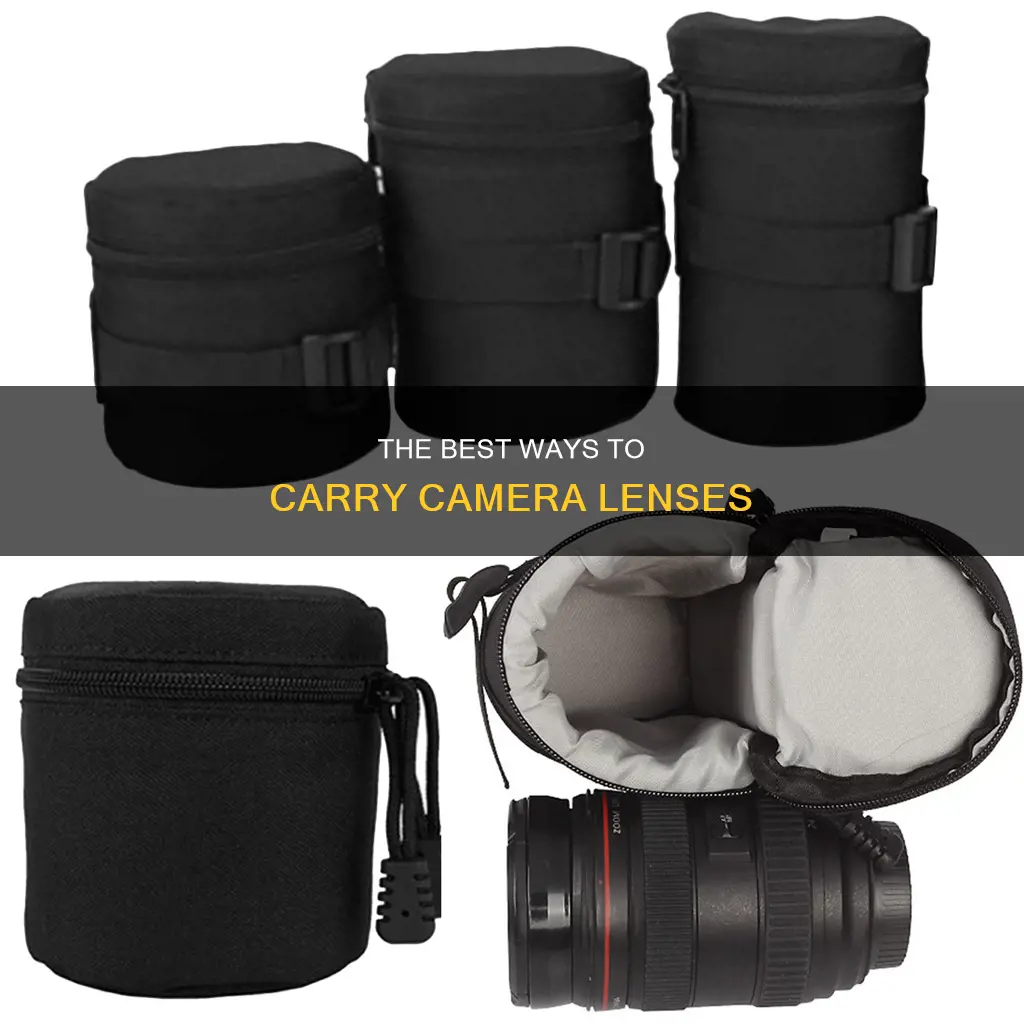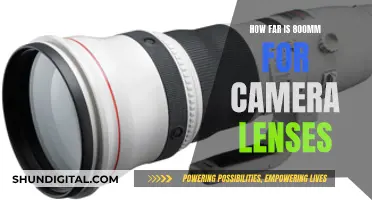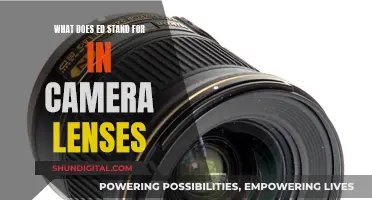
Camera lenses are essential yet fragile pieces of equipment. To avoid damage from dust, humidity, oils, and weather conditions, it's important to invest in a good lens case. There are various options available, from hard shell cases to soft lens pouches, each with its own advantages and disadvantages. For example, while a hard shell case offers excellent protection, it may not be as convenient for on-the-go access to your lenses. On the other hand, a soft lens pouch can be easily attached to your belt or bag, providing quick access to your lenses but may not offer the same level of protection as a hard case. Ultimately, the best way to carry your camera lenses depends on your specific needs and preferences.
| Characteristics | Values |
|---|---|
| Lens case material | Neoprene, nylon canvas, hard plastic |
| Lens case shape | Structured, unstructured |
| Lens case size | Should be snug |
| Carrying options | Shoulder strap, belt loop, belt clip, backpack, messenger bag, separate bag |
| Additional features | Waterproof, lock combination, padded interior |
What You'll Learn
- Use a lens case to protect your camera lenses from dust, humidity, oils, and weather conditions
- Wear a utility belt or fanny pack to keep your lenses handy and accessible
- Attach a lens to your camera strap using a clip or carabiner
- Carry a small, lightweight bag with a shoulder strap or handle for easy transport
- Store your lenses in a separate compartment of your bag to protect them from scratches and damage

Use a lens case to protect your camera lenses from dust, humidity, oils, and weather conditions
Camera lenses are delicate pieces of equipment that can be damaged by dust, humidity, oils, and weather conditions. A lens case is an essential accessory for any photographer looking to protect their lenses and ensure their longevity. Here are some key benefits of using a lens case:
- Protection from Dust and Humidity: A lens case provides a protective barrier against dust and humidity, which can impair lens quality. Dust particles can scratch the lens surface, causing blurry images and affecting focus and light transmission. Humidity, on the other hand, can lead to condensation, mould, and damage to electronic components.
- Safeguarding from Oils and Weather: Lens cases also shield lenses from oils and chemicals, which can smudge or cloud the lens surface and damage internal components. Additionally, they offer protection from changing weather conditions, ensuring your lenses remain safe and dry.
- Convenience and Accessibility: Lens cases come in various designs, such as soft or hard exterior cases, and can be attached to your belt or camera bag for easy access. This allows you to switch lenses quickly and safely during shoots.
- Shock Absorption and Security: Some lens cases feature a padded interior or foam inserts shaped like the lens, providing shock absorption and protecting the lens from impact during transport. Hard shell cases also offer security against theft with lock combinations.
- Customisable Size and Material: Lens cases are available in different sizes to ensure a snug fit for your lenses. Opt for materials like neoprene or nylon canvas for the exterior, providing protection from humidity and bad weather. For the interior, look for padding that is easy to clean to prevent dirt and dust accumulation.
By investing in a lens case, you can effectively safeguard your camera lenses from potential damage and ensure they remain in good working condition for years to come.
Vintage Camera Lenses: Worth the Money or Not?
You may want to see also

Wear a utility belt or fanny pack to keep your lenses handy and accessible
If you're looking to keep your camera lenses handy and accessible, a utility belt or fanny pack is a great option. These allow you to keep your lenses close at hand and easily switch between them without having to open a bag. This can be especially useful if you're in a rush or don't have a flat surface to place your equipment on.
There are a variety of products available that can be attached to a belt or worn as a fanny pack, including:
- Small padded soft lens cases with belt loops
- Belt pouches with zip or drawstring closures
- Belt systems with individual lens cases
- The Peak Design Capture Lens
- The Go Wing Lens Flipper
When choosing a utility belt or fanny pack to carry your camera lenses, consider the size and weight of your lenses, the level of protection needed, and the ease of access. Some options offer more security than others, with features like double locking systems or metal reinforcement. Others prioritise ease of use, with swivel features or multiple anchor points for straps.
While a utility belt or fanny pack can be a convenient way to carry your lenses, there are a few potential drawbacks to keep in mind. For example, lenses attached to a belt may bounce around or be more prone to bumping into things. Additionally, wearing camera equipment on your belt or waist may be less comfortable or more conspicuous than other carrying methods.
Asurion: Cracked Camera Lens Coverage and Claims
You may want to see also

Attach a lens to your camera strap using a clip or carabiner
There are a few ways to attach a lens to your camera strap using a clip or a carabiner. One way is to use a lens pouch with a drawstring that you can clip to your belt loops or camera strap using a carabiner. This method allows you to carry an extra lens securely and access it quickly when needed. Another option is to use a Peak Design Capture Lens, which can be attached to your camera strap and securely holds a small lens. Additionally, you can consider using a lens belt pouch with a belt loop or clip, which can be conveniently attached to your belt or camera strap. These pouches come in various materials, such as nylon or neoprene, offering protection and easy access to your lenses.
When attaching a lens to your camera strap, it is essential to ensure that the setup is secure and comfortable. Adjust the strap length to balance the weight of your camera and lens, preventing the strap from slipping or tangling. Always check your camera manual for specific instructions on attaching straps and lenses correctly.
APS-C Lenses: Universal Fit for All Cameras?
You may want to see also

Carry a small, lightweight bag with a shoulder strap or handle for easy transport
Carrying a small, lightweight bag with a shoulder strap or handle is a great way to transport your camera lenses with ease. Here are some tips to help you make the most of this method:
Choose the Right Bag
Select a bag that is specifically designed for camera gear, as these will have features like padding and adjustable dividers to protect your lenses. Look for a bag that is compact and lightweight, making it comfortable to carry for extended periods. Ensure the bag has a secure closure, such as a zipper or drawstring, to prevent your lenses from falling out.
Organise Your Lenses
Arrange your lenses inside the bag in a way that makes sense to you. You might want to keep the lenses you use most frequently within easy reach. Utilise any pockets or compartments to store lens caps, cleaning cloths, or other small accessories. This will help you stay organised and efficient when you need to change lenses on the go.
Protect Your Lenses
Take precautions to protect your lenses from damage. Use lens caps to shield the glass from scratches and dust. If your bag doesn't have built-in padding, consider investing in lens cases with soft interiors to provide an extra layer of cushioning. This is especially important if you plan to carry other items in the same bag, as they could bump against your lenses during transport.
Consider a Shoulder Strap
If your bag didn't come with a shoulder strap, consider purchasing one separately. A shoulder strap allows you to keep your hands free while providing easy access to your lenses. Look for a strap with padding to distribute the weight more comfortably across your shoulder.
Be Mindful of Weight Distribution
When packing your lenses, be mindful of the weight distribution within the bag. Aim for a balanced load to prevent the bag from feeling lopsided or uncomfortable during extended periods of carrying. If your bag has multiple compartments, distribute the weight evenly across them.
Keep It Close
When travelling with your camera lenses, it's best to keep them close by. Avoid checking your bag in on flights, and instead, carry it on and store it under the seat in front of you. This way, you can keep a close eye on your valuable gear and reduce the risk of damage or theft.
Camera Lenses: Waterproof or Not?
You may want to see also

Store your lenses in a separate compartment of your bag to protect them from scratches and damage
When carrying camera lenses, it is important to protect them from scratches and damage. One way to do this is to store them in a separate compartment of your bag. This will help to keep them safe and secure, and prevent them from getting scratched or damaged during transport.
When packing your camera lenses, it is recommended to put them in a lens case. Lens cases can have either a hard or soft exterior and are designed to protect your lenses from humidity, dust, oils, and changing weather conditions. They also help to extend the lifespan of your lenses, which can be expensive to replace.
When storing your lenses in a separate compartment of your bag, make sure that the compartment is padded and that the lenses are secured in place. This will help to prevent them from moving around and getting damaged during transport.
It is also a good idea to put the lens cap on and store the lens facing up. This will provide extra protection in case your bag is dropped or knocked over.
Additionally, you may want to consider using a camera cube or a generic non-camera bag to carry your lenses. This can help to disguise the fact that you are carrying expensive camera equipment, which may make you less of a target for theft.
By taking these precautions, you can help to ensure that your camera lenses stay safe and secure during transport and are protected from scratches and damage.
Lending Camera Lenses: A Unique Library Offering
You may want to see also
Frequently asked questions
Yes, a lens case is necessary to protect your camera lens from damage and extend its lifespan. It shields the lens from dust, humidity, oils, and changing weather conditions during transport.
There are various lens case options available, such as the Lowepro Lens Case, Peak Design Capture Lens, Go Wing Lens Flipper, and Think Tank Pro Speed Belt with Lens Changer bags.
When selecting a lens case, consider the size, material, and convenience. Ensure the case is snug to prevent the lens from moving around. Choose a durable, water-resistant material like neoprene or nylon canvas. Also, consider how you want to carry the case, such as with a shoulder strap, belt loop, or multiple compartments.
When storing your camera lenses in a bag, it is recommended to disconnect the lens from the camera, put on the lens cap, and store the lens facing up to protect it from potential damage. Keep the lens in a separate compartment to avoid scratches and include cleaning wipes to maintain its condition.







